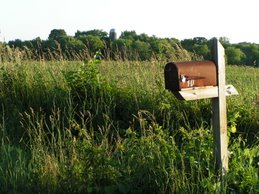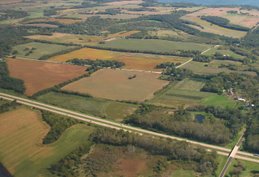By RICH EGGLESTON
It's only coincidence that communities across Wisconsin are required to have their much vaunted comprehensive plans completed not long after the last SUV rolls off the General Motors assembly line in Janesville.
But it's no coincidence at all that our best efforts to map our future via comprehensive planning could end up just as ungainly a dinosaur tomorrow as the Chevy Suburbans that made big money for GM in the era of $1.15 a gallon gasoline.
That's because we're drafting plans for a future that threatens us with $4, $5 or $6 a gallon gasoline under parameters established by the state when gas was $1.15 a gallon.
By the time most communities even thought about comprehensive plans, gas was heading toward $2 a gallon and urban density was still the poor stepchild of development. It never got invited to the ball.
At $6 a gallon, density might be the life of the party. But government is a dinosaur all its own, and a lot of time and effort has been invested in planning for a future of $2 a gallon gas. We have to shift gears, and fast.
Written only 10 years ago, the comprehensive planning law uses terminology that today is outdated as a roadmap to the future. It tells us to plan for transportation and utilities but doesn't say a word about climate change, energy conservation or sustainability.
As a result, we're driving full speed ahead into the past, and our brakes are bad. Fitchburg approved marvelous developments that were well suited to $2 a gallon gasoline. But as the words "subprime mortgage" entered the vernacular, miniature mansions for the masses still rose on Fitchburg's skyline.
The surest way to ease the pinch of high energy prices is to reduce energy consumption. Make the kids walk or bike to soccer practice. Pick up the phone instead of the car keys. Take a train or bus. Let's design our community to make those things easy to do instead of almost impossible.
Around the country, transit saves 3.4 billion gallons of fuel each year, saves us 541 million hours that otherwise would be spent in traffic jams and cuts greenhouse gas emissions by 26 million tons.
According to USA Today, Americans drove 22 billion fewer miles from November through April than during the same period in 2006-07. We are doing it.
And it's happening in a society that until yesterday was transit unfriendly. At $4 a gallon, it might be possible to get people out of their cars without prying their cold, dead hands off the steering wheels. At $6 a gallon, it's a sure thing.
As Fitchburg finalizes our comprehensive plan, we must plan to do more with less energy. If we don't, we'll have a community that is just as well suited to the future as a bunch of ungainly dinosaurs are suited to the 21st century.
And we're going to have to settle for a lot less in terms of quality of life and economic growth as a result.
Monday, July 14, 2008
Fitchburg is planning for the past
Posted by
Terry Carpenter
at
10:30 PM
0
comments
![]()
Categories Carbon Emissions, Comprehensive Plan, Sustainability, Transportation
Suburbs feeling the pinch as fuel prices soar
Open letter to District 2 alders
Submitted by Rosanne Lindsay
This is about the third article (click here) I've seen in as many days, on the need to rethink the status quo planning of suburbs. It offers some ideas to consider. Do we really need to plan and build extra homes when so many are standing empty and those who commute are struggling to fill their gas tank? I'm writing to you to consider how our times are changing and to reflect on these changes when considering the Fitchburg Comprehensive Plan and the approval of development in the NE Neighborhood Urban Service Area. Is there really a true need to add another 1000-plus homes to our Northeast corner when the dollar is heading south, gas prices are heading north, foreclosures and unsold homes are on the rise, and apartment rentals are gaining while home ownership is failing?
When many builders are going bankrupt, and others are trying to unload their unsold lots (see article), then something needs to give. Planners and local governments must find new paradigms. Does Fitchburg really want to add and pay for services to reach the far NE corner when the "core" is really just identifying itself as the area around City Hall and there is plenty of room to promote infill development first? If a new library does go in at the City Hall site, how will new residents on the NE side access it at an affordable price? Will we add transit services? At the moment, we don't even have enough money to expand our current transit service beyond the few runs down PD and Fish Hatchery. Has the Plan Commission considered these pressures on our budget and the pressures on the average homeowner?
Thanks for your consideration.
Posted by
Terry Carpenter
at
1:00 PM
0
comments
![]()
Categories Housing Market, NE Neighborhood Plan, NEN, Transportation


